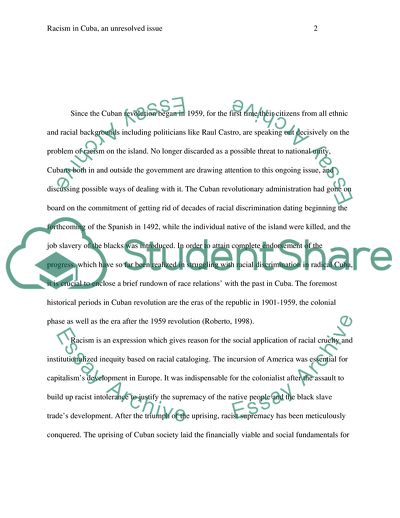Cite this document
(Racism in Cuba Essay Example | Topics and Well Written Essays - 1750 words, n.d.)
Racism in Cuba Essay Example | Topics and Well Written Essays - 1750 words. https://studentshare.org/sociology/1773691-racism-in-cuba-an-unresolved-issue
Racism in Cuba Essay Example | Topics and Well Written Essays - 1750 words. https://studentshare.org/sociology/1773691-racism-in-cuba-an-unresolved-issue
(Racism in Cuba Essay Example | Topics and Well Written Essays - 1750 Words)
Racism in Cuba Essay Example | Topics and Well Written Essays - 1750 Words. https://studentshare.org/sociology/1773691-racism-in-cuba-an-unresolved-issue.
Racism in Cuba Essay Example | Topics and Well Written Essays - 1750 Words. https://studentshare.org/sociology/1773691-racism-in-cuba-an-unresolved-issue.
“Racism in Cuba Essay Example | Topics and Well Written Essays - 1750 Words”. https://studentshare.org/sociology/1773691-racism-in-cuba-an-unresolved-issue.


